Nodes are an essential part of blockchain infrastructure, and they help keep the network secure. Nodes are also valuable tools when it comes to developing decentralized applications, or dApps, or Web3 apps. They are advantageous since they allow developers to deploy contracts, check user balances, and much, much more. Furthermore, there are different kinds of nodes that have different functions in a chain. Two examples of nodes are full nodes and full archive nodes. Both the full and archive nodes are quite similar in many ways but have some essential differences. However, in this article, we will take a closer look at full archive nodes and what makes them unique.
Even though nodes are so critical for developers, it can, in some cases, be difficult to find good nodes or blockchain node providers. However, the process of finding a node does not need to be complicated; with Moralis, it is possible to get nodes for several different networks with just a few clicks. This node service provided by Moralis is called Speedy Nodes. These nodes are fast, reliable, and secure nodes that can be used for development, and offer full Moralis integration. Furthermore, Moralis also offers full archive nodes, which can be helpful in many cases. If you want access to Speedy Nodes and other Moralis tools, it is entirely free to sign up with Moralis, and it only takes a few seconds!
What are Nodes?
Before we take a closer look at what full archive nodes are, we should better understand what a node is. So, what is a node, and what are its purposes?
Fundamentally, nodes are one of the components that are critical to the infrastructure of a blockchain. The information that a blockchain holds is stored on the nodes of the chain. This means that nodes can essentially be any device, such as a computer, laptop, or a server.
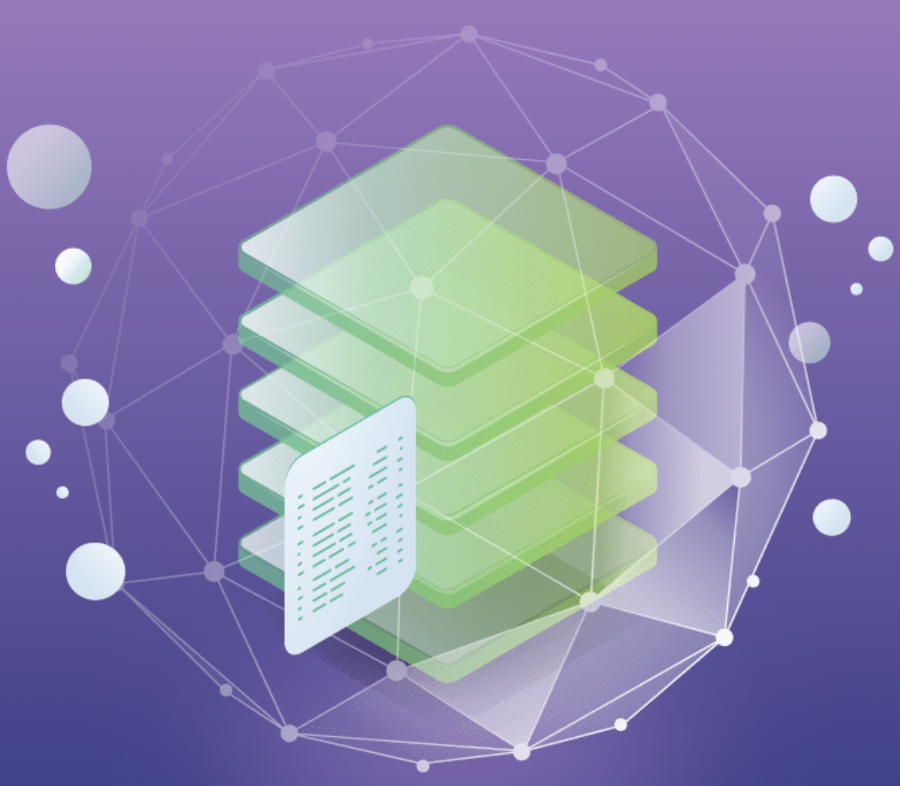
It is the nodes that make up the infrastructure of a blockchain, and all nodes are interconnected with one another. This means that the nodes that make up a blockchain that constantly shares data in order for all the nodes to stay up to date.
One of the main functions of blockchain nodes is to validate blocks. This means that a node can either accept or reject a transaction that happens on the chain. If the node accepts the transaction, it stores and saves the data on top of the other blocks.
Furthermore, nodes are also endpoints which means that nodes are the way for users and applications to interact with the blockchain. This means that nodes can be seen as gateways to access the blockchain and its information.
Moreover, it is not uncommon that the nodes that make up a network fulfill different functions. The functions that the nodes have can depend on the network which they make up. However, keeping the network safe and open to people are two essential roles.
There are also different types of nodes. Two examples would be full nodes and full archive nodes — the latter of which we will take a closer look at in the following paragraphs.
What are Full Archive Nodes?
A clue to what full archive nodes are can be found in the name itself. The keyword here is “archive,” which is basically what these nodes are. These full archive nodes contain everything that can be found in a full node, along with the history of the relevant blockchain. These nodes are, therefore, essentially nodes that include all previous states of a given blockchain. This means that they contain a snapshot of the blockchain’s ecosystem, at each block since its origin.
As a record of the chain states is available, it is possible to take a look into the past. Therefore, we can use an archive node to examine past states of the chain and use this historical information when developing applications. Furthermore, one of the greatest benefits of a full archive node is that we are able to query information at great speed, something that is great for development. Along with this, the possibility to look into the past can be helpful when using block explorers.
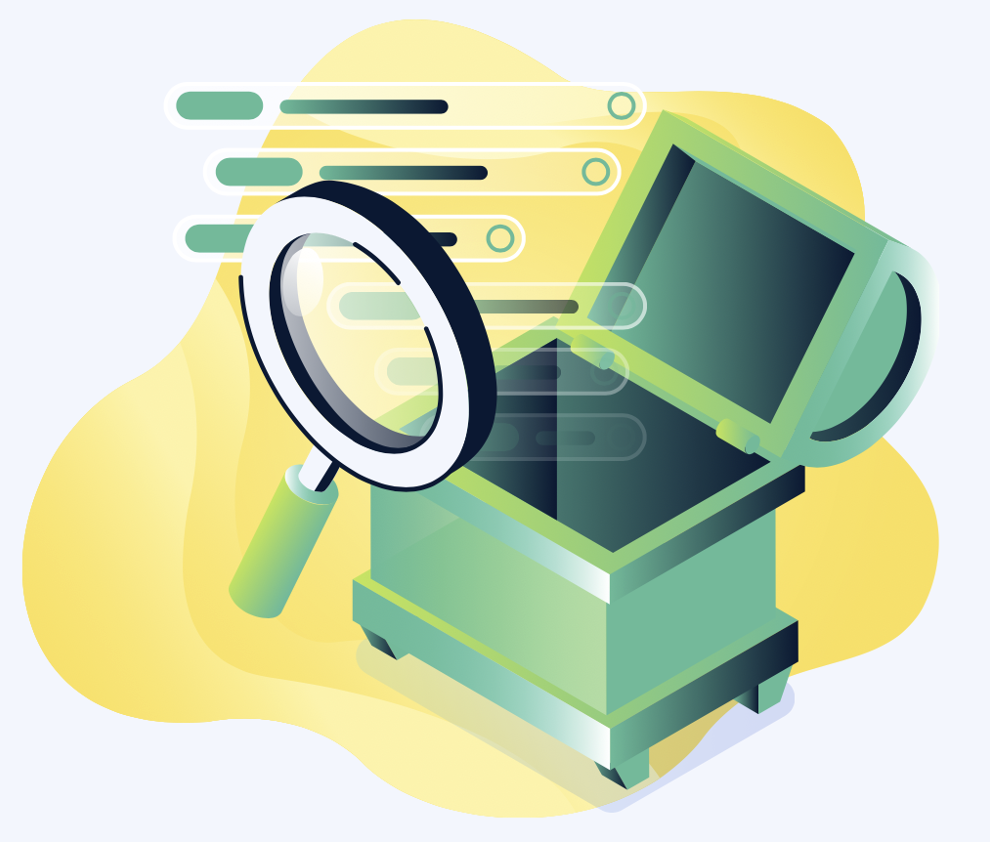
As the full archive nodes contain information about past states of a chain, it means that they need to contain a vast amount of data. Consequently, this means that they are very large in size.
In the article’s initial paragraph, we mentioned that nodes could be used to change MetaMask from Ethereum to another network. This is possible but in this case, using a full archive node is somewhat unnecessary. However, there are other use cases for archive nodes that we will take a closer look at.
When are Full Archive Nodes Useful?
Arguably the most prominent characteristic of an archive node is that it contains the historical data of a chain. This means that the use cases for these nodes are those where we need access to past states of a chain in a fast manner. Archive nodes are, therefore, helpful in dApp development where the need for historical information is essential.
It is possible to use these nodes to develop simple applications. An example of an application could be a website showing the current block number of a chain. However, this does not explore and take advantage of the historical data that can be accessed through these nodes.
Another yet simple application that can showcase how this information can be used is a website displaying the number of tokens that exist at a given time. To make the example even more apparent, we can use the Polygon network. Here we can create an application that shows the amount of WMATIC at, lets say, block 100. However, we would, of course, need access to a full archive node of the Polygon network to achieve this in an efficient way.
Moreover, suppose you are interested in learning more about the use cases of archive nodes. In that case, we recommend this video from the Moralis YouTube channel where Ivan on Tech showcases and visualizes the examples from above:
Essentially, these nodes are needed when accessing data from the past states of a blockchain. It is not limited to only finding out the supply of tokens, but also how smart contracts looked, etc. So, what is the best way to acquire such nodes?
Getting Access to Archive Nodes with Moralis
In the introduction of the article, we talk about blockchain node providers. As it is beneficial to have nodes when developing dApps, the need for them has increased, and so has the number of providers. However, it can still be challenging to find a good, stable, and fast node that can be used for development. This is where Moralis supplies developers with the Speedy Nodes service.
The nodes that Moralis provides are reliable and fast, which means that they are ideal for developing new products. Along with this, the Speedy Nodes can also be used to connect our MetaMask accounts to different networks. Moreover, the Speedy Nodes are just one of the many valuable tools that Moralis provides its users. So, what exactly are these Speedy Nodes, and why should we use them?

One of the great benefits of Speedy Nodes is that they are extremely developer-friendly. These nodes provide the same functionality that can be expected from a regular BSC or Polygon node, but they are also highly reliable and have great speed. These are two facts that make them highly attractive when developing dApps.
Moralis provides Speedy Nodes for three different networks; Ethereum, Binance Smart Chain, and the Polygon network. The Speedy Nodes make it easier to run a node, and it is possible to choose between the test/mainnets of the different nodes. Furthermore, with the Speedy Nodes, it is possible to access full archive nodes of all three networks.
This means that Moralis and the Speedy Nodes are great tools for developers who need access to different chains’ historical states. If you are interested in learning more about Moralis’ Speedy Nodes, we recommend the following video where Ivan on Tech explains Speedy Nodes more in-depth:
How to Connect to Full Archive Nodes with Moralis
To access the Speedy Nodes provided by Moralis, the first thing that you need to do is to sign up for free at the website. As you have created an account, the following step is to log into the account.
Once you have your account set up, you will find a menu on the left side of the screen. Here you will find tabs such as ”Servers”, ”Deep Index API”, and, of course, ”Speedy Nodes”. To access the nodes, click the ”Speedy Nodes” tab. As you click this tab, you will be presented with three alternative networks. These are the ETH, BSC, and Polygon Networks.
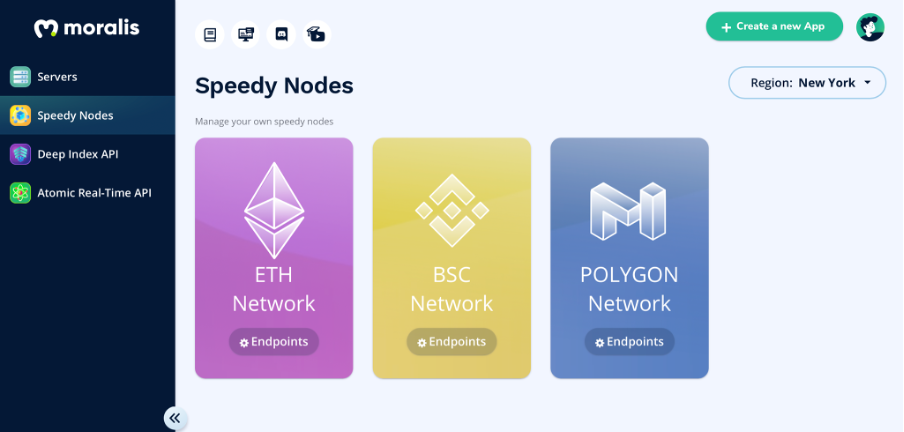
Clicking the ”Endpoints” button for each network will provide us with URLs for the main/testnets. And as we mentioned earlier, Moralis also features archive nodes for all different networks. So, to access the archive nodes, the URLs that you want to use are the ones containing ”Archive” in the name.
Moralis Endpoints
You might wonder what these endpoints enable you to do when signing up with Moralis? The URLs provided by the Speedy Nodes can basically be regarded as the nodes. So, for example, the URL provided for the Polygon mainnet is the Polygon node itself.
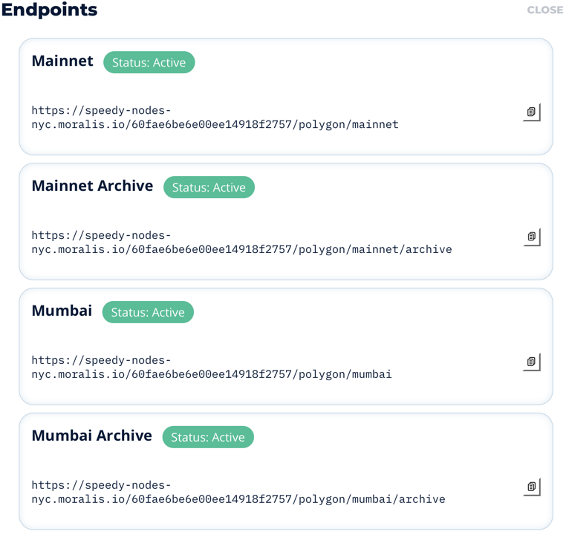
However, it does not matter which URLs you opt for; it is still possible to interact with them in different projects and the command line. This means that Moralis enables the communication between the network and the project that you are building.
Furthermore, the URLs that you can collect from the Speedy Nodes can also be used to change your MetaMask accounts from the Ethereum network to another desired network. This means that you can create new custom networks using both the Polygon and Binance Smart Chain nodes. However, suppose you are unfamiliar with MetaMask. In that case, we highly recommend that you take a closer look at the following article, which is a breakdown of MetaMask and how to create an account.
Archive Nodes vs. Full Nodes
Another important and interesting question is: what are the differences between an archive node and a full node?
A full node on, for example, Ethereum, stores the entire blockchain. A full node, therefore, keeps all of the blocks and all the transactions in the chain. This means that a full node has enough information to validate all transactions beginning from the original block in the chain to the current state. This might sound similar to what we described in the section on full archive nodes.
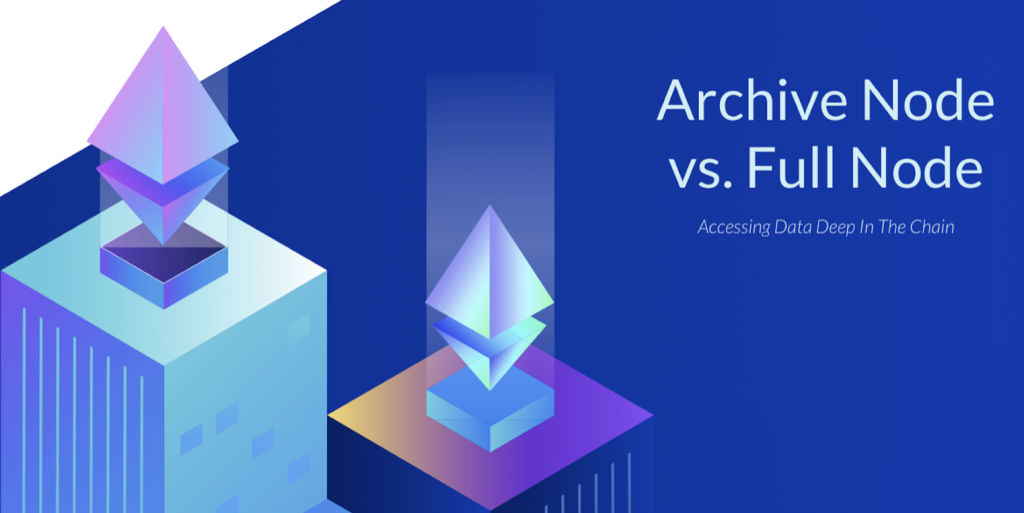
However, the difference between a full node and an archive node is that the latter stores all of the historical states of the chain. The states that these nodes stores are basically a snapshot of the entire Ethereum ecosystem.
However, a full node only needs to keep a snapshot of recent states since this is all the information they need. This means that a full node does not keep the state of a chain from, for example, two years ago.
Moreover, since the full node has all the blocks stored, it is possible to go back in the chain and calculate, let’s say, the balance of a user as an example. But, this means that we need to go through every block and see what transactions have been made. This takes time and computational power if we want to query something from the past.
However, as a full archive node keeps a snapshot of the states at all blocks, we can query information much faster. This means that if an application needs information from a past state of the chain, it is much more efficient to use an archive node.
What are Full Archive Nodes? – Summary
Having a node for development is a great tool that has many use cases. They enable developers to check balances, deploy smart contracts, and many other things. However, acquiring a node can, in some cases, be quite difficult and a bothersome task. This, however, is where Moralis shines. Moralis provides its users with Speedy Nodes, which are fast, reliable, and free nodes for the Ethereum, Binance Smart Chain, and Polygon networks. Furthermore, Moralis also provides an archive version of all the nodes.
Full archive nodes are basically nodes that store a snapshot or a state of every single block since the origin of the chain. This means that it is possible to query these nodes for information at specific blocks in time and receive the information instantly. As they can process the data at great speed, they are an excellent tool for developing dApps that depend on historical information.
Furthermore, the process to acquire a full archive node has never been easier with Moralis. The Speedy Nodes provided by Moralis are not only reliable and fast, they are also entirely free for the Moralis users.
If you want access to these nodes and other excellent tools, do not hesitate and sign up with Moralis today! Creating an account is completely free, and you can begin developing dApps immediately.
